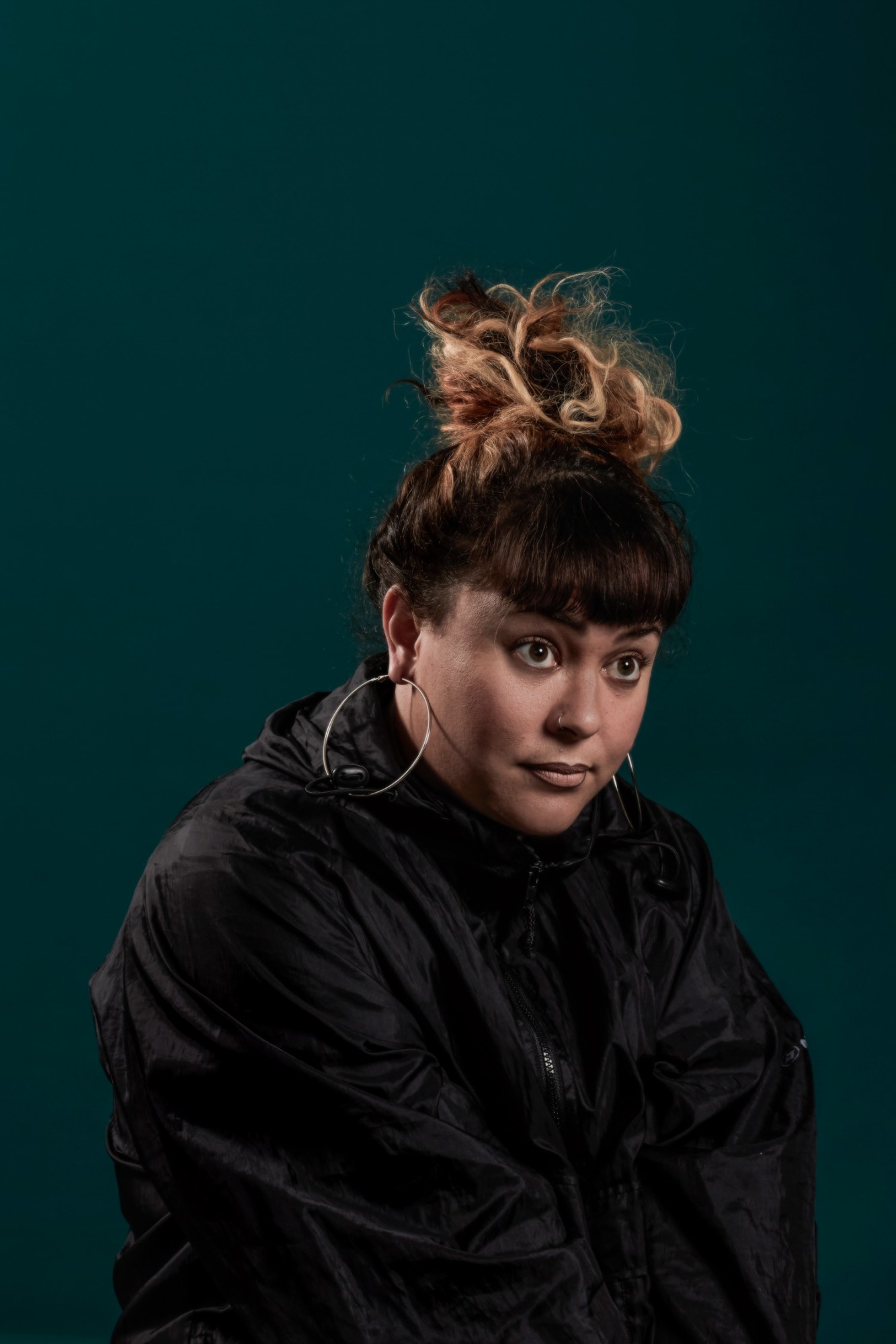Jessica Hansell is Coco Solid, a multi-disciplinary artist from New Zealand who fights tokenism and binaries with cartoons, rap and documentaries. Identifying as a Māori/Samoan/German Aucklander, she floats between Wellington and Auckland where her powerful work keeps her very busy: her records and mixtapes are increasingly the stuff of Kiwi music legend. She’s also one half of Parallel Dance Ensemble and a founding member of New Zealand noize collective Badd Energy.
Outside of music she’s reaching a different audience through her cartoon series Aroha Bridge. The show —about to start its second season— follows the musical aspirations of twins Kowhai and Monty Hook. While the character’s dreams of making it big on their suburb’s scene are played for laughs, under Jess’ gaze the show is an unexpected study of suburban Kiwi life. i-D caught the jack-of-all-trades in one of her spare moments to chat about what goes on behind the scenes of such a prolific practise.
I noticed you’re speaking at the Emerging Writers Festival in Melbourne soon on the panel for diversity in publishing. Let’s start by speaking a bit about that. You’ve been vocal about the challenges around addressing diversity without being a token.
Being visible is always a double-edged sword: you’re kind of setting yourself up as the minority and the voice of reason. Often, when you participate in that kind of dialogue you other-ise yourself, so I always do it very carefully. I’m a multicultural person so I walk in multiple worlds. From a very young age I’ve let limitations become a part of my story. You feel like a weaponised spore, just moving your way through these spaces, and of course I find it frustrating. That being said, I think Australasia and Aotearoa New Zealand are really starting to catch up with a lot of discourse to do with our exclusion in all writing fields. As I’ve come of age I’m enjoying a new, really cool kind of era where I let my work speak for me more often. Men and white people just assume that’s how it is, but I’ve had to fight for the right to be able to do that.
Speaking of being a multicultural person, you recently returned to New Zealand from Melbourne. How do you see the representation of Indigenous people in those art and music worlds?
The two struggles are inseparable; they may have different consequences and be of different scales but I think in terms of the Indigenous struggle on this side of the world, we are dealing with the same demon. When I go to create work —even if it’s a comedic vehicle, a cartoon or a sitcom— I’m still speaking about a universal truth that is the cruel hijinks of imperialism.
How did you find your time living in Australia?
What I felt culturally in Australia was really overwhelming. The exclusion of the Indigenous brothers and sisters from the national psyche was chilling. It actually drove me back home: to do what I could for my own people, creatively.
Interestingly, you explore these themes in Aroha Bridge. On the surface that doesn’t seem like a topic for a cartoon.
When I began working in the format of animation and comedy it clicked that I could get away with tonnes more vicious observations, and they can be more brutal and confronting, if it’s under the guise of comedy. People warm to it because you know, it’s almost like they signed a contract that it is all in good fun. It’s something that definitely gets the greatest cultural response— pop-culturally, socially, politically. That’s the power of satire: you know you’re consensually looking at yourself with a harder lens. You might get hurt at the end of it but that’s your problem.
You’ve made a habit of playing with different formats to examine different identities. Recently you produced a documentary about the FAFSWAG Ball [a South Auckland scene that celebrates Polynesian transgender culture through fashion, vogue and dance battles]. What’s your relationship with that community?
I hold my own queer identity pretty closely and have always been very holistically immersed in that scene. Through my life, especially in my youth, I often felt people were trying to dupe me out of my potential and my voice because I was forced to adhere to this really mediocre, binary way of thinking. I’m just totally disinterested in that kind of gender stuff, I see myself oscillating somewhere between Lil Kim and Kim Deal [laughs.] Femininity is game and masculinity is a game, I throw the coins up every day and don’t know which way they’re going to fall. The same goes with my queer identity, it’s just dependent on context.
Credits
Text Hannah Butterworth
Photography Milana Radojcic
